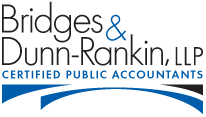Documenting Timely Filing
By Kenneth H. Bridges, CPA, PFS February 2013
Documenting the timely filing of tax returns is not exactly a sexy topic; but a very important one nonetheless. We put a lot of time and effort into documenting the timely filing of returns and extensions on client behalf; and likewise a lot of time and effort into getting clients out of proposed penalties where the taxing authorities believe a return has been filed late or a payment made late.
The general civil penalty for late filing of an income tax return is 5% of the balance due (up to 25%), so if you file your return in September thinking you timely filed an extension by April 15, but didn’t, then you can add 25% more to the balance due. For partnerships, LLCs and S-corps, the penalty for late filing of a Federal return is $195 per month (or any portion thereof) per partner, member or shareholder, up to a maximum of $2,340 per partner, member or shareholder. So, for a partnership with 100 partners, the penalty for late filing of a return can be up to $234,000. Of potentially even greater consequence, many tax elections can only be made on a timely filed return. In light of these potential consequences, it is imperative that you be able to document the timely filing of tax returns and extensions.
Generally, a return is considered to be filed on the date it is delivered to the IRS. However, under the “timely mailed, timely filed” rule, a return is considered to have been mailed on the date it is delivered to the US Postal Service. In order to prove the date the return was delivered to the postal service, you should obtain from the Postal Service (and retain for your records) a date-stamped white copy of a certified mail receipt. This is really the only acceptable proof that you actually delivered the item to the Postal Service by the required date. The green card (which is supposed to be mailed back to you by the taxing authority) provides evidence that the taxing authority actually received the package, but doesn’t evidence when you mailed it and does nothing for you if the taxing authority never receives the package. Accordingly, while the green receipt card can be helpful as evidence the authority received the item, it is the white copy that is most important. Where we are providing tax forms of a very time-sensitive nature to clients for their mailing, we generally go ahead and complete the white certified mail receipt for them. However, we sometimes find later that the client just dropped the package into a mail box. You really have to go into the post office and get the white copy stamped in order to accomplish the intended purpose.
A “designated” private delivery service (DHL, FedX or UPS) can provide evidence of timely filing, so long as you use their 2nd day delivery service or faster service.
In situations where we are dealing with exceptionally large payments or matters of extremely high exposure, we may hand deliver to an office of the taxing authority.
While historically most tax filings have been by mail, increasingly tax filings are being handled electronically. Many returns now are, in fact, required to be filed electronically. In the case of electronically filed returns, the date of filing is the date the authorized electronic return transmitter receives the transmission on its host system.
With respect to Federal returns mailed from foreign countries, the regulations state that the timely mailed/timely filed rule only applies to items deposited with the US Postal Service, and not to items deposited with the postal services of other countries. However, the IRS has issued a Policy Statement and a Revenue Ruling indicating that it will, in fact, honor the post mark of a foreign postal service.
In determining whether to use certified mail for an item being sent on behalf of a client or whether to recommend to a client that they use certified mail, we try to consider the potential exposure associated with a late filing of the particular item and weigh the additional cost and hassle factor (e.g. a trip to the post office) versus the benefit.
Kyle K. Bartleson, CPA is a partner with Bridges & Dunn-Rankin, LLP an Atlanta-based CPA firm.
This article is presented for educational and informational purposes only, and is not intended to constitute legal, tax or accounting advice. The article provides only a very general summary of complex rules. For advice on how these rules may apply to your specific situation, contact a professional tax advisor.
